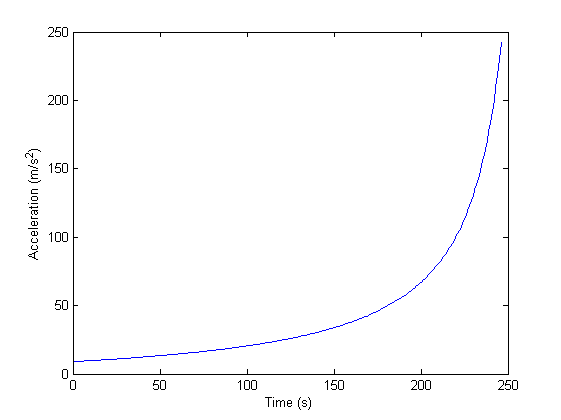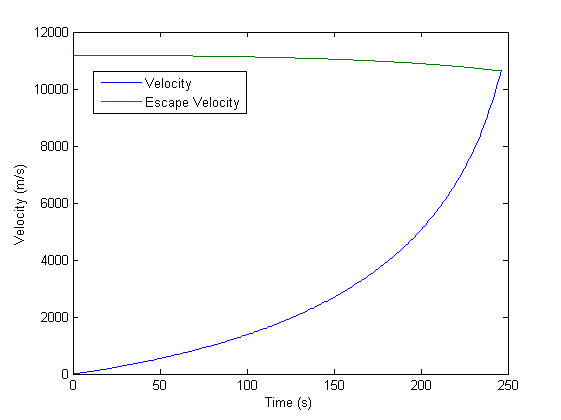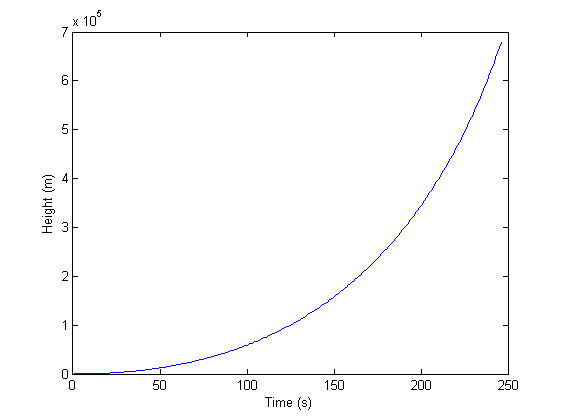In a previous post we looked at the fuel requirements for rockets to reach escape velocity. We calculated the fuel requirements using the rocket equation. This equation takes into account the conservation of momentum. However, momentum is not the only property influencing the velocity of the rocket during a launch.
Rockets expel their fuel over time. During this time, the rocket is pulled back due to gravity. Only if a rocket could instantaneously expel all of its fuel, and when ignoring atmospheric drag, the escape velocity would be reached instantaneously and the equation would hold.
Taking the burn-time and gravity into account yields a difficult differential equation. We can implement that equation in a computer program to simulate the launch.
The equation is of the following form:
Here, dv is the total change in velocity, caused by the parts dv_e and dv_g, which respectively are the change in velocity due to the exhaust and the change in velocity due to gravity. In the post about the rocket equation, we found:
M is the mass of the rocket, dv_e is the change in velocity due to the exhaust, v_e is the exhaust velocity and dm is the amount of fuel expelled. Because the instantaneous mass of the expelled fuel dm is equal to the negative instantaneous change of the rocket’s mass, -dM, we get:
Now we will evaluate the function dv_g. The force of gravity acting on the rocket due to the Earth is:
As per usual, G is the gravitational constant. Furthermore, M_\oplus is the mass of the Earth, M is the mass of the rocket, and r is the distance of the rocket to the center of the Earth.
Plug the found values into the initial differential equation:
With the requirement that v \ge v_e, where v_e is the escape velocity \sqrt{2G\frac{M}{r}}, it becomes clear that this equation is hard to solve by hand. Instead, we will implement the equation in a computer program to simulate it. We’ll use the following values for our digital rocket:
The last value is the burn-rate of the fuel. For simplicity, we will assume both the exhaust velocity and the burn-rate remain constant during the launch. After running the program for multiple initial rocket masses (i.e., different amounts of fuel), we find that the rocket requires roughly 24.5 \text{ tonnes} worth of fuel to escape Earth’s gravity completely, which is a lot more than the 19 \text{ tonnes} found with the naive calculation in the previous post.
The graphs of the height, velocity, and acceleration versus time can be seen below. With this configuration, during the final seconds of the launch, the rocket reached an acceleration of nearly 25 g’s. Such high forces are incredibly dangerous for humans. Therefore, if this were a real spacecraft carrying humans, it would be vital to throttle down during the final stage of the launch.
Rocket acceleration over time Rocket velocity over time Rocket height over time 


Update 2018-11-28: the simulation has been reimplemented in JavaScript, you can interact with it here: